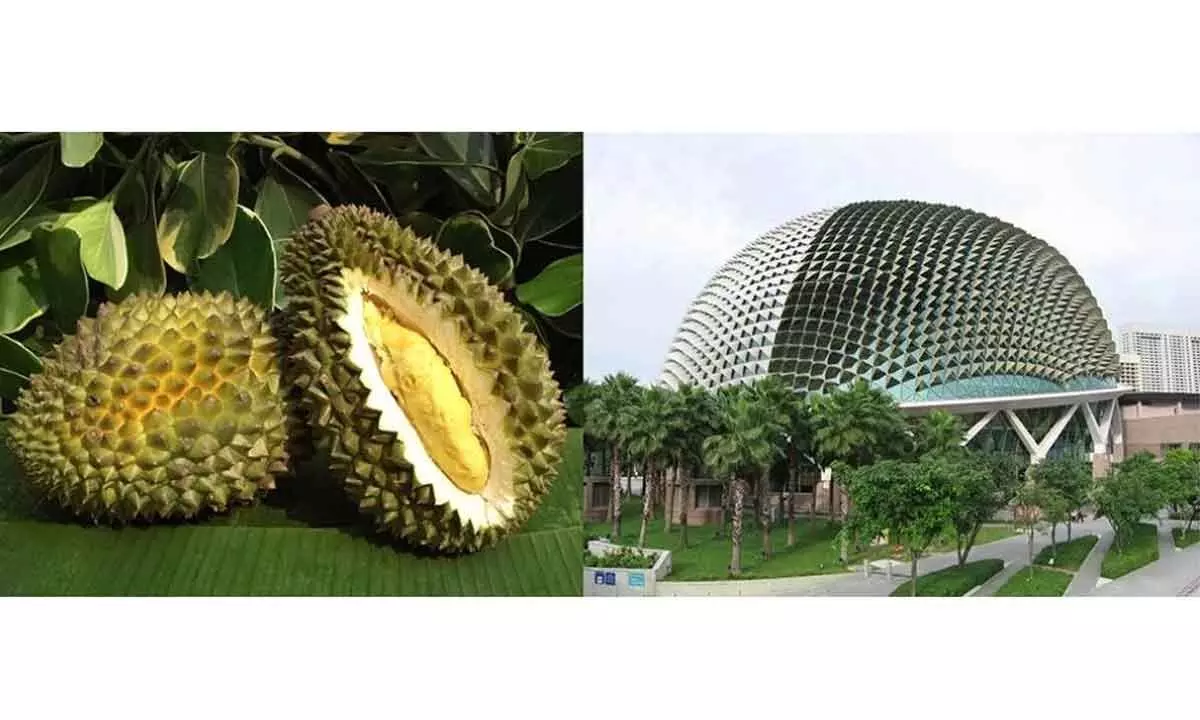Is biomimicry India’s key to a sustainable future?

India’s adoption of biomimicry would represent a harmonious blend of traditional knowledge and modern innovation. Biomimicry harnesses nature’s time-tested strategies to tackle diverse urban challenges, ranging from resource scarcity to climate resilience. The global urgency around sustainability, catalysed by initiatives like the 2030 Agenda for Sustainable Development, may enhance India’s interest in biomimicry.
Biomimicry has emerged as a transformative approach. This innovative practice draws inspiration from nature’s solutions to create designs and technologies that address pressing developmental issues. The evolution of biomimicry in India has some well-known examples– the Lotus temple in Delhi that provides cooling comfort, the use of ladybugs instead of pesticides as natural predators in agriculture, camouflage patterns worn by the military for concealment, artificial neural networks inspired by human intelligence, and others. Biomimicry has paved the way to explore new advancements in this field. A pivotal area for biomimicry application is sustainability. By emulating biological processes and systems, biomimicry offers a promising avenue to achieve the country’s Sustainable Development Goals (SDGs) while fostering inclusive and sustainable urban development.
India’s adoption of biomimicry would represent a harmonious blend of traditional knowledge and modern innovation. Biomimicry harnesses nature’s time-tested strategies to tackle diverse urban challenges, ranging from resource scarcity to climate resilience. The global urgency around sustainability, catalysed by initiatives like the 2030 Agenda for Sustainable Development, may enhance India’s interest in biomimicry. Fulfilling this agenda may align biomimetic innovations with international sustainability goals, driving advancements.
Looking forward, biomimicry holds immense potential to revolutionise various Indian industries. From healthcare to transportation, biomimicry approaches may inspire several breakthroughs. On this note, important questions arise on India’s potential to apply and benefit from biomimicry. In this article, we recognise the contribution of biomimicry across industries using notable examples that might interest readers to ask – Is biomimicry the future of India’s sustainability solutions? Has India untapped the full potential of nature-inspired innovations?
Energy
Biomimicry leads to advancements in renewable energy technologies. For instance, wind turbine blades are designed after humpback whale fins, optimising aerodynamics for increased
efficiency and reduced noise. WhalePower in Toronto is testing turbines that mimic these fins’ bumps, potentially enhancing turbine efficiency. In another instance, Radwanul H. Siddique in
Germany discovered that butterfly wings have photonic structures enhancing light absorption. He found that these nanostructures can be used to develop biomimetic solar cells, which mimic
the wings’ light-capturing abilities to improve solar energy efficiency.
Transportation
Biomimicry improves vehicle efficiency and design. In particular, Japan’s Shinkansen bullet trains, inspired by kingfisher beaks, reduce noise and energy consumption while increasing speed. This approach aims to make urban transport more sustainable and efficient. As an illustration, a team within the Audi Urban Future Initiative used biomimicry to develop Flywheel, redesigning urban transport systems to operate on multiple levels, much like nature’s layered interactions. This approach creates a more efficient and interconnected network, allowing vehicles to move in various directions and levels, similar to a three-dimensional grid. Inspired by the movement patterns of fish schools and bird flocks, the system aims to improve mobility, reduce congestion, and enhance overall transportation efficiency in cities.
Healthcare
Biomimicry is driving medical innovations for improved treatments and diagnostics. For example, researchers at the Harvard-MIT Division of Health Sciences and Technology developed gecko-inspired (lizard-like) adhesives for medical bandages and surgical tapes, mimicking gecko feet for effective wound closure. Interestingly, in India, scientists found spider silk to be an excellent biomaterial for skin regeneration. Additionally, they are studying nocturnal geckos’ multifocal optical systems to develop advanced cameras and multifocal contact lenses.
Water and waste management
Biomimicry offers solutions for efficient water filtration and waste processing by taking inspiration from the lotus leaf. To illustrate, researchers at RMIT University developed a plastic that repels liquids and dirt while breaking down quickly in soil. This bioplastic, mimicking the water-repellent properties of lotus leaves, enhances waste management and environmental sustainability. Another MIT student’s study of the Namib Desert beetle’s ability to harvest water from fog led to the development of fog-harvesting structures mimicking the beetle’s textured back, providing a sustainable water source in arid regions. This innovation could aid the 900 million people without safe drinking water. Additionally, researchers from India, Switzerland, and Italy created a lotus-inspired, biodegradable material for use in sensors, robotics, and 3D printing, offering an eco-friendly alternative to petroleum-based products.
Architecture and construction
Biomimicry inspires sustainable building designs and materials, as seen in Lavasa near Mumbai and Pune, which is India’s first city designed on biomimicry principles. Taking inspiration from ants, the city channels water efficiently. Its rooftops are modelled after banyan fig leaves, allowing water to run off smoothly while naturally cleaning the surfaces. This approach not only enhances sustainability but also integrates harmoniously with the surrounding environment.
Through these illustrative examples of biomimicry which involves emulating nature, we find that many industries can transcend traditional boundaries, offering sustainable and innovative solutions by emulating nature’s efficient and adaptive strategies. Therefore, answering the questions that we initially posed i.e., Is Biomimicry the Future of India’s Sustainability Solutions? Yes. Biomimicry has taken significant strides in several industries. India’s investment in this direction can pave the way to the future of sustainability. However, has India Untapped the Full Potential of Nature-Inspired Innovations? While the country has made notable strides in applying nature-inspired innovations across various sectors, there remains untapped potential; the number of such examples from India remains limited. Increased awareness, research, and application of biomimicry could lead to further breakthroughs and help India achieve its sustainability goals. To fully harness this potential, greater emphasis on biomimetic solutions and more dialogue on their benefits are needed.
(The writer is PhD Scholar at ICFAI Business School, Hyderabad and Co-founder of Byrut Business Solutions)
















